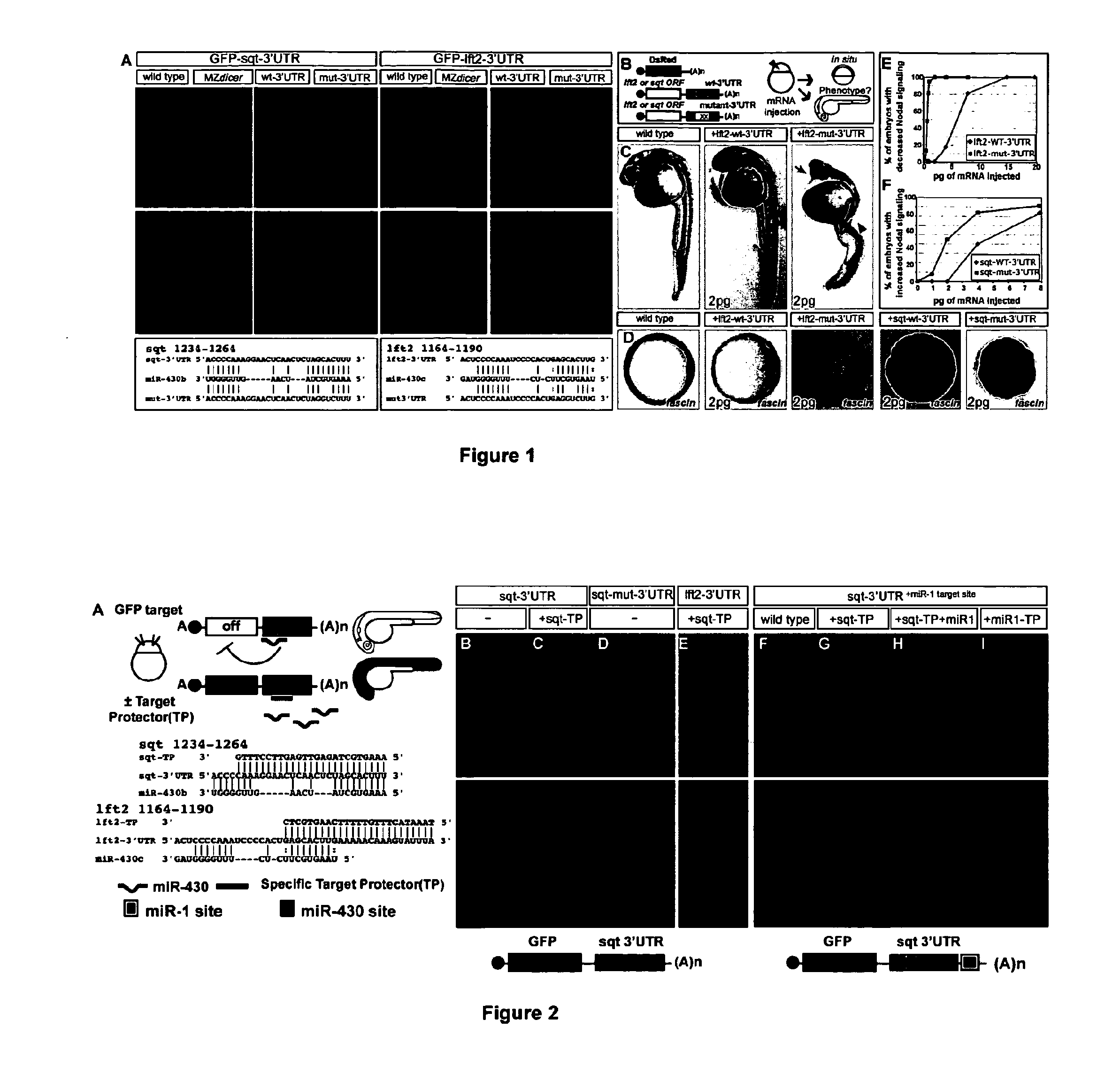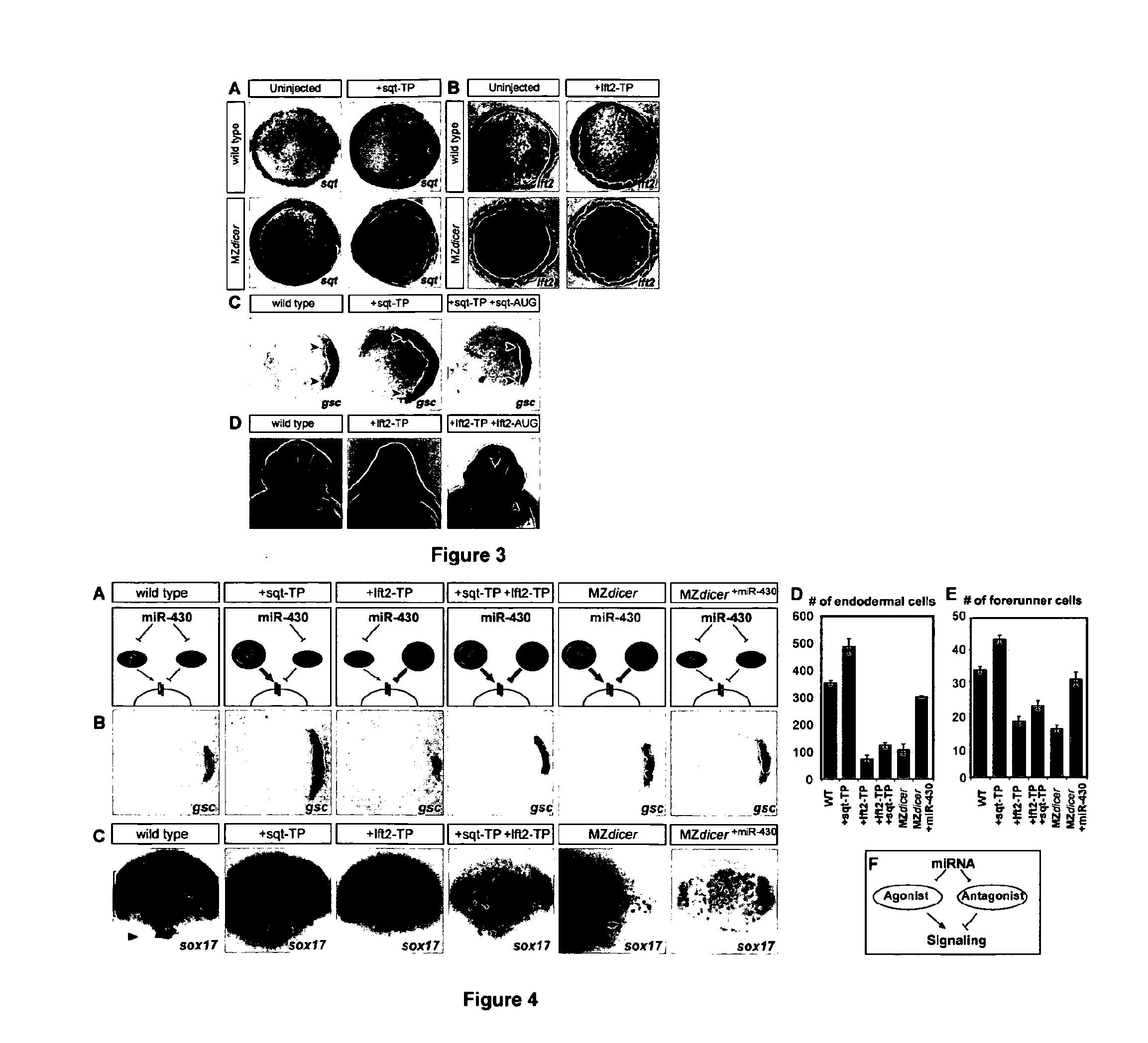Methods of increasing gene expression through RNA protection
a technology of gene expression and protection, applied in the field of increasing gene expression through rna protection, can solve the problems of interfering with the ability of the target rna to interact, e, etc., and achieve the effect of increasing the expression of the gene corresponding to the target mrna
- Summary
- Abstract
- Description
- Claims
- Application Information
AI Technical Summary
Benefits of technology
Problems solved by technology
Method used
Image
Examples
examples
[0080]The specific examples provided herein focus on the zebrafish miR-430 family. This miRNA family is highly expressed during early zebrafish development, targets hundreds of mRNAs, and is required for embryonic morphogenesis and clearance of maternal mRNAs (A. J. Giraldez et al., Science 308:833-8 (2005); A. J. Giraldez et al., Science 312:75-9 (2006)). It should be noted, however, that the invention described herein is not limited to this particular embodiment, as this embodiment is intended merely as a representative example. Analysis of 3′ UTRs with sites complementary to miR-430 identified squint (sqt), a member of the Nodal family of TGFβ signals, and lft1 and lft2, members of the Lefty family of TGFβ signals (FIG. 5). Nodals are the key regulators of mesendoderm induction and left-right axis formation, whereas Leftys act as antagonists of Nodal signaling (A. F. Schier, Annu Rev Cell Dev Biol 19:589-621 (2003); M. M. Shen, Development 134:1023-34 (2007)). The balance between...
PUM
| Property | Measurement | Unit |
|---|---|---|
| Fraction | aaaaa | aaaaa |
| Fraction | aaaaa | aaaaa |
| Fraction | aaaaa | aaaaa |
Abstract
Description
Claims
Application Information
 Login to View More
Login to View More - R&D
- Intellectual Property
- Life Sciences
- Materials
- Tech Scout
- Unparalleled Data Quality
- Higher Quality Content
- 60% Fewer Hallucinations
Browse by: Latest US Patents, China's latest patents, Technical Efficacy Thesaurus, Application Domain, Technology Topic, Popular Technical Reports.
© 2025 PatSnap. All rights reserved.Legal|Privacy policy|Modern Slavery Act Transparency Statement|Sitemap|About US| Contact US: help@patsnap.com



